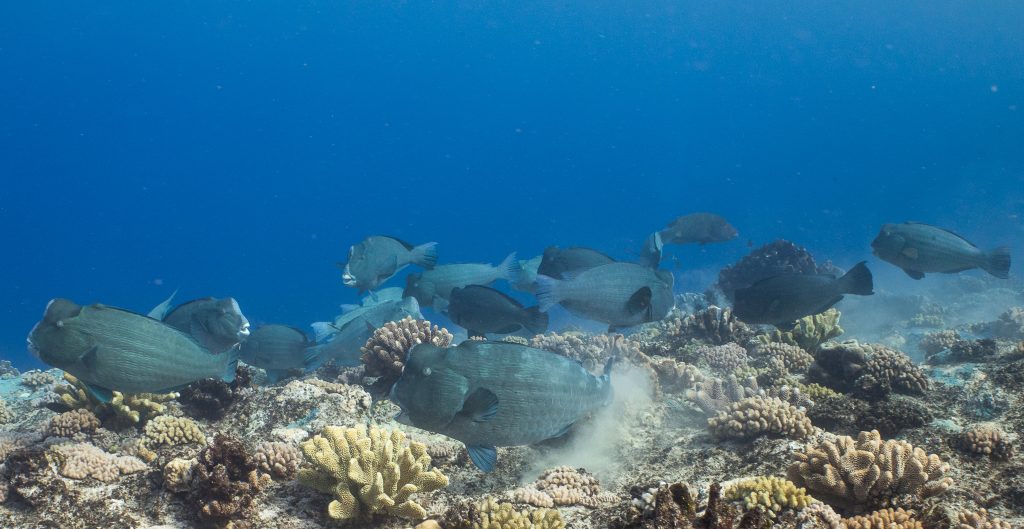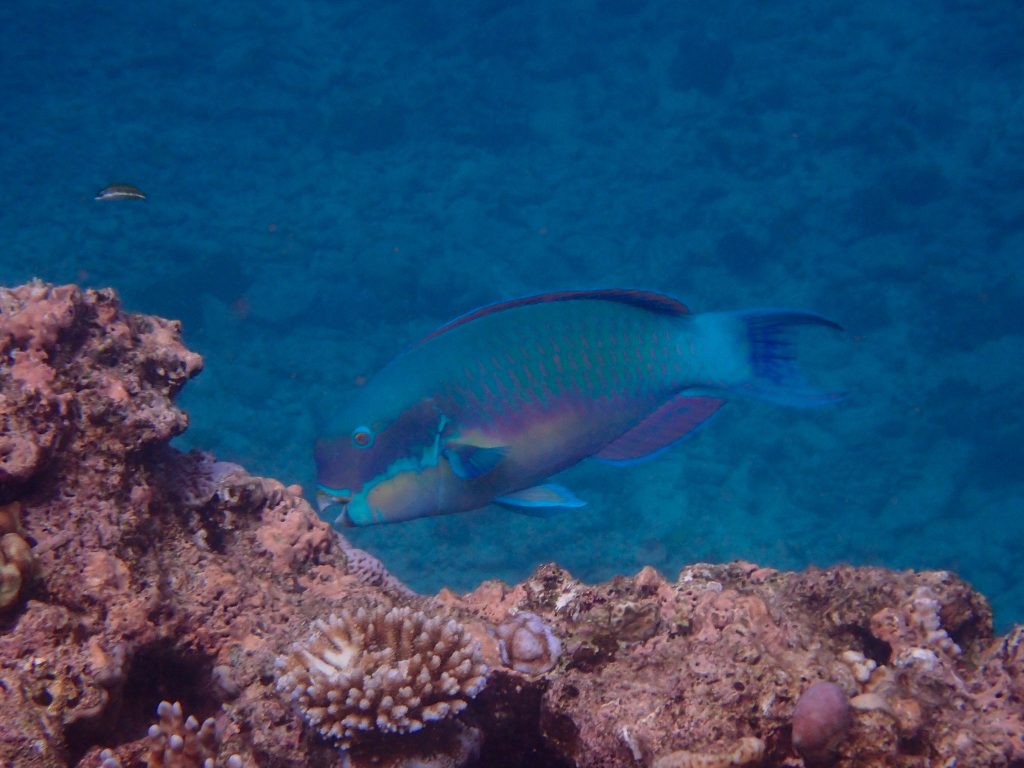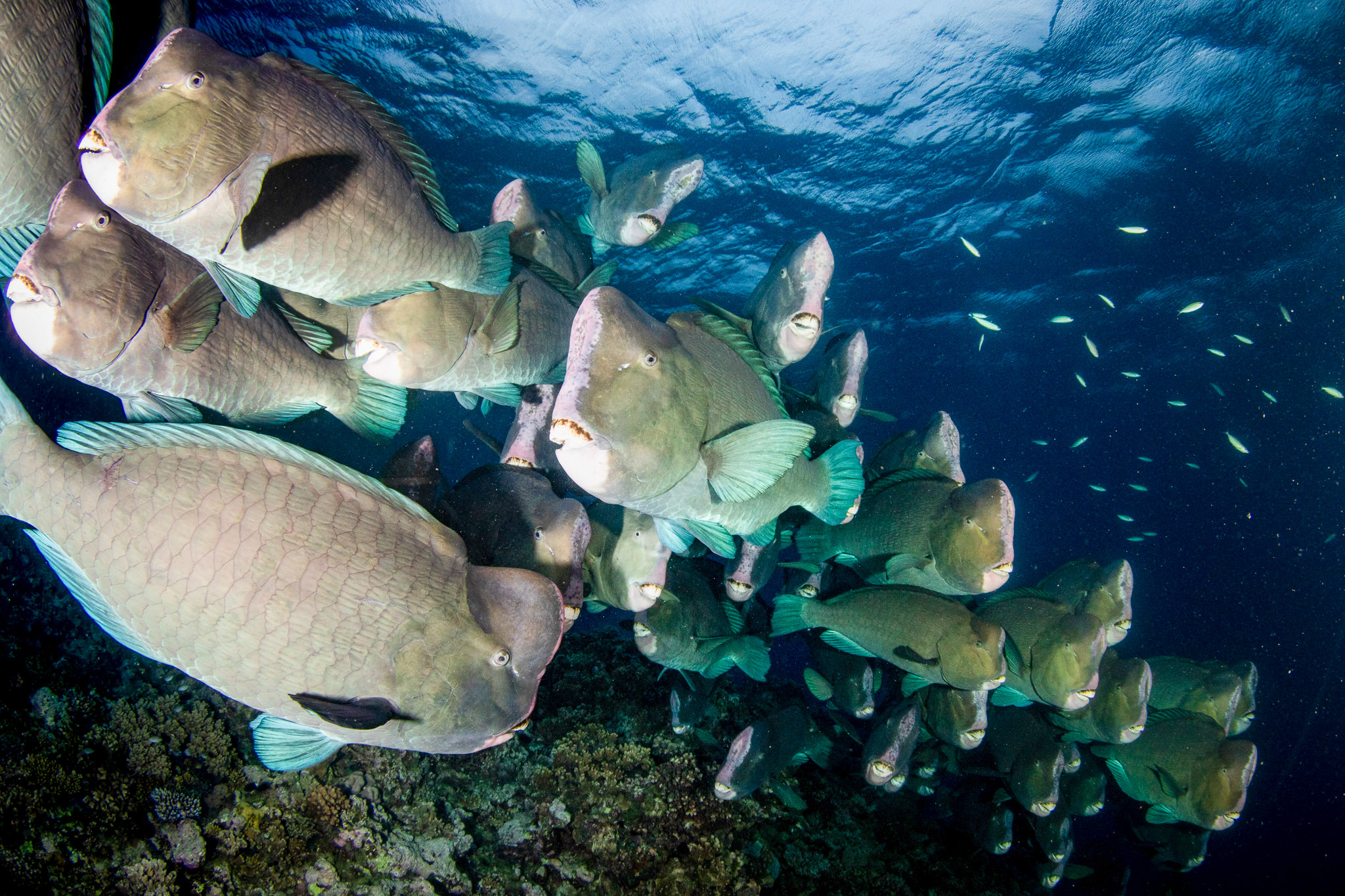The first time I saw a group of them I was far to the east of the Great Barrier Reef, beyond Australia’s continental shelf, 15 metres underwater at Bougainville Reef that rises as a platform in the northern Coral Sea.
They were like buffalo across an open plain: kicking up the dust – except it was sand. And eating the grass – except it was coral. I am, of course, referring to the mega parrot fish, the bumpheads: Bolbometopon muricatum.

A single bumphead will feed on about 5 tonnes of live coral in a year. They often hang around in groups of about 30, with that one cluster all up consuming more coral than the entire live export coral trade takes each year from the Great Barrier Reef (100 tonnes versus 150 tonnes).
In short, these fish have bellies full of coral – lots of coral.
We live in an age that tends to promote empathy for corals, so I am surprised there are not stories cancelling all the parrot fish.
Worldwide, there are some 130 species of corallivorous fishes (fishes that consume live coral) from 11 different families, with butterflyfishes (family Chaetodontidae) accounting for approximately half of all of these.
Three years after that expedition to Bougainville Reef, I spent three days on the liveaboard Reef Encounter just off-shore from Cairns. One morning, as I waited in the water for the sunrise dive to begin, I saw a group of them, bumphead parrot fish, sleeping together in a particular formation under the boat. I don’t have a photograph, I was initially confused at what I was seeing, and then I was so enamoured I couldn’t be bothered with my camera.
As part of the Underwater Megafauna Expedition & Photo Competition we are visiting Wheeler Reef, to the south east of Townsville, because bumpheads are known to pass along a northwest channel at that reef late in the afternoon. Reliability so.
The plan is that the ‘megafauna photographers’ will be waiting – to photograph them.
There are three photographers coming, with two of these already signed-up! There is more information at my Facebook page, where I have it listed as an event.
I love a beautifully composed underwater photograph with perfect lightening, but the winner(s) of each of the four categories in this competition will not only have a great photograph of the very largest, but they will also know its size, they will have some measure of what they have photographed. Hopefully. This is the inaugural competition and I am asking a lot of the photographers.
There are potentially places for two more underwater photographers. All aboard the MV Sea Esta by 8pm on Monday September 2nd en route to Myrmidon Reef via Wheeler and also Grub Reef. At Grub Reef we will be looking for the giant clams.

*****
The feature image was taken by Tobi, in April 2021 at Saxon Reef. How can we know the size of the largest of these bumpheads?


 Jennifer Marohasy BSc PhD is a critical thinker with expertise in the scientific method.
Jennifer Marohasy BSc PhD is a critical thinker with expertise in the scientific method.

They are impressive creatures and it is fascinating to watch how quickly they can devour their way across a reef. It provides another aspect to life on a reef which will escape casual commentators who don’t have the opportunity to experience them. So here we come to a question for readers? If you see a nice bit of white coral how would you classify the cause? Bumpheads/other coralliverous fish/Crown-of Thorns Starfish (COTS)/submarine volcano hot blob/ENSO/storm damage/climate change/any other? Bear in mind that distinguishing between bumphead and Crown of Thorns has to be done by close visual inspection – the former scrape chunks out of the coral consuming both polyps and skeleton, subsequently excreted as sand, whilst the latter digest the polyps by secreting enzymes, but leave the skeleton. In other cases the coral may just be going through a change of symbiotic algae. Those differences cannot be properly evaluated by Manta tow, and certainly not by drone or aircraft. Whilst volumetric estimates are inevitably difficult with a wide range of results, there are some that suggest as much of 20% of coral sand has passed through a fish intestine, and thereby an important contribution to reef building.